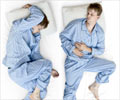A small device that both detects the initial signal of an epileptic attack and doses a substance that effectively stops it has been developed by researchers.

‘A small device that both detects the initial signal of an epileptic attack and doses a substance that effectively stops it has been developed.’





A recently produced estimate suggests that no less than 6% of the Earth's population suffers from some type of neurological illness such as epilepsy or Parkinson's. Some medicines are available, but when these are taken orally or injected into the bloodstream, they also end up where they aren't needed and may cause serious problems. All medicines have more or less severe side effects, and no fully satisfactory treatment for neurological illnesses is available. Neurons, or nerve cells, are the cells in the body that both transmit and receive nerve impulses. The small device developed by the scientists can both capture signals and stop them in the exact area of nerve cells where they arise. No other part of the body needs to be involved.
"Our technology makes it possible to interact with both healthy and sick neurons. We can now start investigating opportunities for finding therapies for neurological illnesses that arise so rapidly and so locally that the patient doesn't notice them," says Daniel Simon.
The experiments were conducted in the laboratory on slices of brains from mice. The device consists of a sensor that detects nerve signals, and a small ion pump that doses an exact amount of the neurotransmitter GABA, a substance the body itself uses to inhibit stimuli in the central nervous system.
"The same electrode that registers the activity in the cell can also deliver the transmitter. We call it a bioelectronic 'neural pixel', since it imitates the functions of biological neurons," says Daniel Simon.
Advertisement
The small ion pump, which was developed at the Laboratory for Organic Electronics, attracted a great deal of attention when it's first application as a therapeutic device was published a year ago. The sensor that captures the nerve signal has subsequently been developed by the LiU researchers' collaborators. The mouse experiments were performed at Aix-Marseille University. The entire device is manufactured from conductive, biocompatible plastic.
Advertisement










